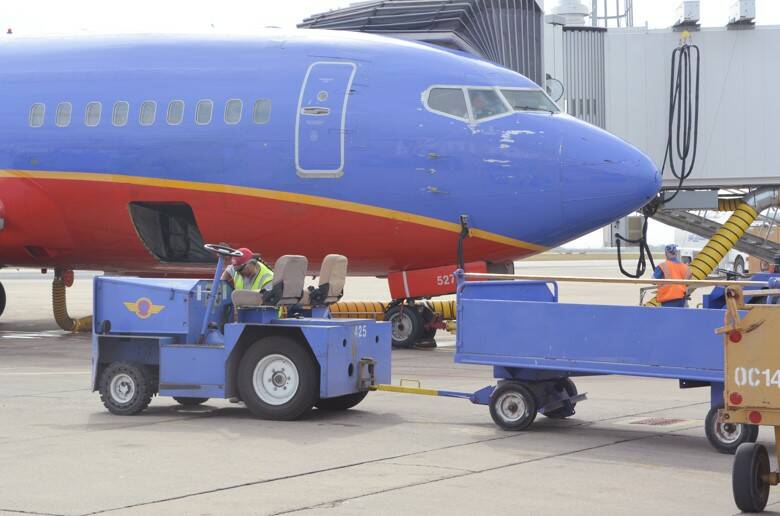HARLINGEN — The loss of Frontier Airlines this month did little to stem the rising tide of enplanements at Valley International Airport in July, where the airport rode a surge of Southwest Airlines flights to break the 40,000-passenger mark again.
In 2018, Denver-based Frontier added Harlingen as its 100th destination city, but like many airlines is suffering from a shortage of pilots and crew, it has responded by slashing routes.
A year ago the airline instituted nonstop flights between Harlingen and Las Vegas and Harlingen and Orlando.
“Frontier had less than 4 percent of our market here but we were sorry to see them go,” Marv Esterly, director of aviation at VIA, told the airport board this week. “They had pilot and crew issues as well. They said ‘Hey, we had a great partnership and we really enjoyed the way you guys partnered with us and we’re hopeful to be back. If we come back to the Valley it will be at Valley International airport.’”
In July, Frontier flew 1,579 passengers out of Harlingen, nearly double its enplanements compared to the same month in 2021.
In all, VIA totaled 42,381 passenger enplanements in July, up from 32,724 a year ago.
“July was an unbelievable month. Actually I’ve been here since January 2015, and this is the biggest month we’ve had since I’ve been here,” Esterly said. “As a matter of fact, you’d have to go back to 2008 to see these numbers that we’re seeing this year.”
“You can see there that Southwest Airlines threw a lot of seats in our market,” he added.
Southwest recently doubled the number of flights to and from Harlingen to eight per day and enplaned 29,256 passengers in July. That was up 108.7 percent from a year ago, and it gave the airline 69 percent of market share among airlines flying to VIA.
United Airlines had 4,276 enplanements in July, and American Airlines had 5,760 passengers. Sun Country Airlines, with its new Harlingen-to-Cancun direct flights, enplaned 1,510 passengers.
Both United and American have pilot and crew issues as well.
Analysts say a combination of factors is responsible, including a large number of Baby Boomer-era pilots retiring, fewer pilots coming out of the military given the increasing use of unmanned drones, and the fact many airlines offered early retirement when demand for flights cratered during the height of the COVID-19 pandemic.
As travel demand has since surged, many airlines are scrambling for qualified pilots and other crew members.
It takes time and money to train a commercial airline pilot. Normally it takes five or more years of training at a cost of over $100,000 to make a pilot airline-ready.
Also, the Federal Aviation Administration has set a mandatory retirement age of 65 for commercial airline pilots.





